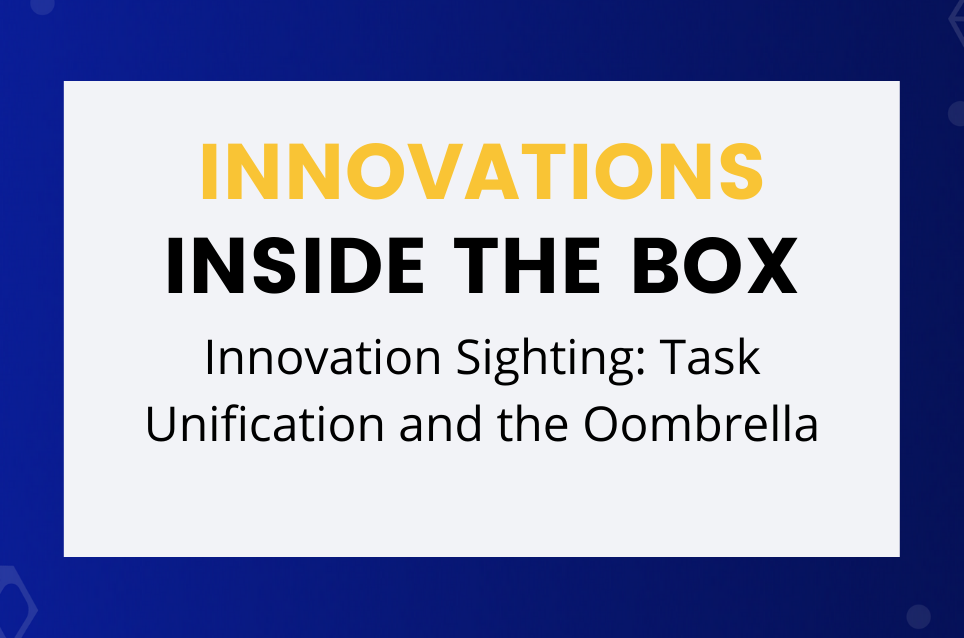I love umbrellas and the many versions that demonstrate the five patterns of Systematic Inventive Thinking. Here’s a new one that demonstrates the Task Unification pattern. Task Unification is defined as: assigning an additional task to an existing resource. That resource should be in the immediate vicinity of the problem, or what we call The Closed World. In essence, it’s taking something that is already around you and giving an additional job.
Oombrella is a beautiful smart connected umbrella that alerts you before it rains and sends you a notification if you leave it behind. From their website:
What makes oombrella unique is its notification services that alert you before it rains and if you leave your umbrella behind. ombrella’s hyper-local weather data and tracking keep you informed and notified. Yet oombrella is an umbrella. It means that it protects you against the rain, and its ribs make it really wind-resistant.
As an umbrella, it can be adapted to you. This means you can pick the color, go for the Shiny edition, a very elegant White Edition or choose the revisited yet classic Black edition. In terms of size, you can choose too! Go for a classic size or one that fits in your bag.
The good part of oombrella is that you can also track all your activity and see the weather you experienced during your trip. How? Thanks to the sensors that are integrated into the handle: temperature, pressure, humidity and light. We use all this data to create the notifications “Take me with you. It will rain in 15 minutes”
To get the most out of the Task Unification technique, you follow five basic steps:
1. List all of the components, both internal and external, that are part of the Closed World of the product, service, or process.
2. Select a component from the list. Assign it an additional task, using one of three methods:
- Choose an external component and use it to perform a task that the product accomplishes already
- Choose an internal component and make it do something new or extra
- Choose an internal component and make it perform the function of an external component, effectively “stealing” the external component’s function
3. Visualize the new (or changed) products or services.
4. What are the potential benefits, markets, and values? Who would want this, and why would they find it valuable? If you are trying to solve a specific problem, how can it help address that particular challenge?
5. If you decide the new product or service is valuable, then ask: Is it feasible? Can you actually create these new products? Perform these new services? Why or why not? Is there any way to refine or adapt the idea to make it viable?





